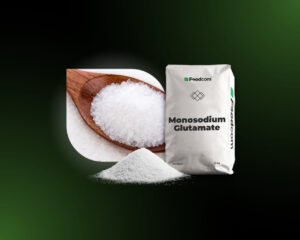- Monosodium glutamate is a flavour enhancer used as a food additive.
- It is mainly produced from maize, the yield of which has exceeded expectations this season.
- Low maize prices, the geopolitical situation and changing consumer preferences have contributed to increased dynamics in the MSG market.
What changes are being observed in the MSG market?
Monosodium glutamate is a flavour enhancer used widely as a food additive. The substance imparts an umami taste to products. It is particularly popular in Asian cuisine and in the processed food industry. MSG is produced from fermented corn or sugar cane. MSG prices are closely followed by experts in the food additives industry, not only because of the high importance of this product, but also because changes in its market are often an indicator of wider trends in the sector.
In recent months, numerous changes have been observed in the global MSG market. Experts cite both the complex interaction of agricultural trends, geopolitical factors and changing consumer preferences as reasons. Asian markets continue to see high demand for MSG, but consumers in Europe and America are increasingly rejecting products with MSG content for health reasons. Taking all these factors into account, experts predict further dynamic changes in the MSG market.
Agricultural trends and the MSG market
Contrary to predictions, many agricultural areas of the world experienced favourable weather conditions this season for growing crops such as maize. Global maize production exceeded expectations, resulting in prices falling below the levels seen in the last two years. In the US, maize prices fell by up to 50%, reaching their lowest level in four years.
The fall in the cost of sourcing maize as the main raw material for MSG has allowed the price of this flavour enhancer to fall – both on domestic and international markets. This situation can create both an opportunity for increased margins and increased competition, resulting in a price war in the MSG market. In shaping global market trends, Asian countries such as China, which has significant stocks of maize, and India, which, despite increased domestic demand for maize, is still a significant player in the food additive market, play a significant role outside the US.






